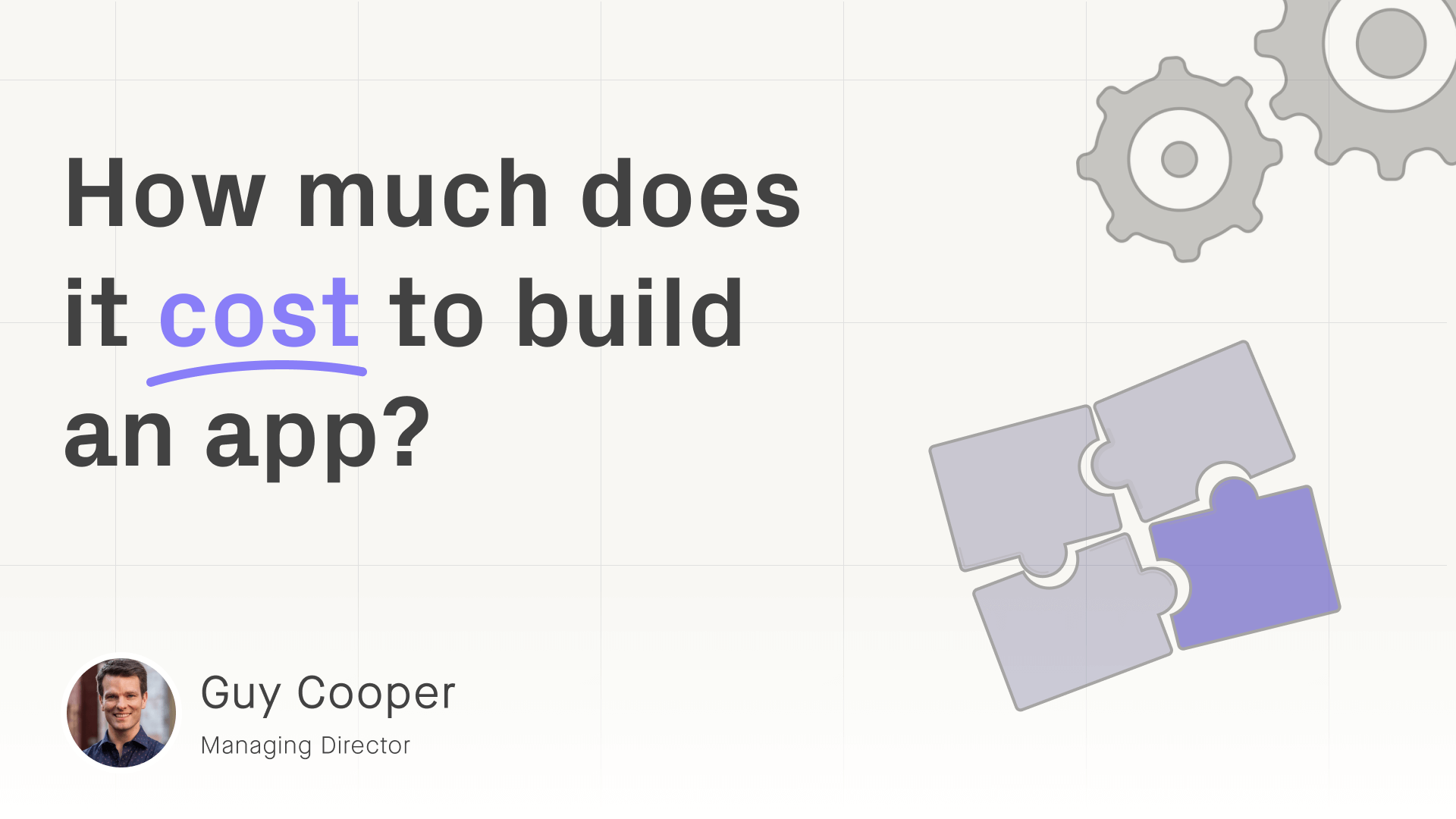How to create a successful app: Foundations for long-term growth
31 July 2024
A guide for decision makers and entrepreneurs in the education, health, government, non-profit and research sectors on how to create a successful app.
With users abandoning most apps after the first or second use, we want to set you on the path to creating a successful app right from the start. Until this point, you might have kept a laser focus on the important step of designing and developing your new app. We understand where you’re at, this is what we do best here at Wave Digital.
Perhaps you’re excited about the day that you’ll finally launch your new app and catalyse the change that you envision. Likewise, after over 20 years of building apps for the public and private sector with our local team in Australia and New Zealand, we understand and share the energy and drive that you and your team bring to your app.
Let’s step back though for a moment and consider the landscape of app success and failure. In early 2024 Statista revealed that 30 days on from installing an app, app user retention rates significantly dropped off across industries worldwide. Business apps had one of the highest retention rates at just 5%. This dropped to 2.8% for health and fitness apps and 1.76% for education apps.
We’re sharing these sobering stats as it’s important to be attuned to the challenge ahead. Creating a successful app is not for the faint of heart. The good news is there’s plenty that you can do now to lay the foundations for a successful app.
In this guide, we'll explore ways to ensure the long-term success of your app including:
- De-risking your app with a ‘less is more’ approach
- Thinking humans first, then technology to match
- Looking beyond app design and development
- Building a robust business case for your app
- Bringing technology into the core of your organisation
Plus, we’ll explore insights on what has made some of our clients’ apps a long-term success.
1. Derisk with a 'less is more' approach
Regardless of the industry, leading organisations build strong digital capabilities to support them. When organisations double down on technology, they create amazing experiences.
Remember though that a successful app isn't about having the ‘Rolls-Royce’, fully featured end-state app right from the beginning, and packing in as much as possible at the start. This will mean compromising on how well you can execute on each feature. The reality is, your app will be substandard.
You can end up doing more, not as well. We recommend doing less, memorably, with a roadmap for future iterations.
Today, consumers have high expectations of technology. The apps that we use on a daily basis are often run by multi-billion dollar companies with immense budgets.
For smaller organisations, for example in the government, health, research, non-profit or startup space, that do not have the resources to replicate this, it’s worth instead honing in on the people you serve and the problem that you’re solving. This means being clear on where there’s the most need.
Have a roadmap in mind, be ready to iterate, and to do this really well. Rather than thinking, ‘I have one budget and one chance – I’m doing this once’, it’s worth spending less money upfront. For a successful app, try to do less, really well. And keep a healthy runway to iterate on your app.
Pace what you need now, and what can come later, so that you don’t end up cutting corners and delivering a substandard user experience.
Leverage where you can create value and seamless experiences now. Start small and then learn, iterate and build long-term. This is a powerful way to de-risk your app and your investment in it.
Consider if you’d prefer to invest, for example, $250,000 into your app now, with no guarantee that it's going to be successful. Or, would you prefer to start with one part of the problem and spend $150,000 now, leaving a runway to solve other parts of the problem if the metrics support spending that extra $100,000?
It comes down to whether you’d prefer to take on more risk upfront at the start, or less risk with specific goals in mind. Once you have metrics in place, you can derisk stages of your app and the investment that’ll go into it. You can proceed with subsequent stages with more certainty.
You can do more with less certainty and more risk. Or you can do less, do it well, and have more certainty for subsequent stages. This investment pace sells itself.
This investment pace is aligned with how investors fund startups. Risk and investment is staged, rather than up front. There are clear parameters around how success is defined.
What will success look like for the initial app design and build process, for example in 12 months?
Defining app success will make decisions clearer and easier to critically analyse during design and development.
You’ll be able to ask, will these ideas move the needle towards success? If not, you can pencil them into a roadmap for the future. You can focus your efforts right now on moving the needle towards success.

2. Think humans first, then technology to match
If you’re in the early days of thinking about your new app you may have ideas around what you’d like it to do, otherwise known as your features. For long-term app success, it’s vital to firstly define the problem that your app will solve and validate this need before you detail features.
Clients often approach us with an exhaustive list of features, but limited information about the user or the user context. There are numerous ways to bring the same 'feature' or 'group of features' to life. Good design is about working out how to bring a feature to life 'the right way' to create a memorable experience, not about the feature itself.
Memorable experiences will be key to the long-term success of your app. Therefore, early on in the design process we must ensure the focus is on understanding users, their needs, fears, wants and desires.
Understanding the problems users face and the likely context in which they’d use the product will help us determine not only what features to develop, but most importantly how to develop them.
At the core, people buy benefits. They sign up to an app to solve a problem. What problem will your app solve?
Research shows that almost one in three users download apps because they hope they’ll save time or simplify their lives.
Validate if there’s a strong need for your app through market or stakeholder research so that you’re clear on the difference it’ll make in people’s lives. Who do you serve? Be ready to push your thinking beyond technology and features, and focus on humans.
Remember that successful apps are built from a foundation of thinking about people and better lives first, then using technology to build features to match.

3. Look beyond app design and development
For a successful app, it's worth having a broader business conversation early on that looks beyond designing interfaces and building your app. The design and build of your app is just one part of a bigger picture that’ll influence whether your app succeeds in the long-term.
The solution you’re creating is not the app in isolation, position your app within a broader context.
You’ll need to define how your app aligns with your overarching business strategy, and where your app will be positioned within the flow of a broader user journey.
From a marketing perspective, how will users firstly discover your app? Then, how will you build enough interest in your app for people to take that crucial next step to download and use it? With most users abandoning apps after the first or second use in less than a month, how will you demonstrate value quickly and motivate your users to keep returning?
How will you embed your app within your marketing strategies? What content will be created for your website, social media, and other channels to help build awareness, conversions, and long-term users and advocates of your app?
Connect early on with everyone who will play a part in your app’s success.
Be sure to collaborate with people, whether in your organisation or service providers, who compliment your knowledge and expertise. This could include collaborating early on with marketing, brand, or communications specialists. There are lots of angles to consider when ensuring you have the right people on your immediate and wider app dream team.
Perhaps your app will support the rollout of a new study that engages citizen scientists. Or fundraising and action around an issue that will create social change. How will everyday people in the community discover your app and use it to advance your study or cause? How could you make your app stand out to potential partners, sponsors, funding bodies, or philanthropic organisations?
Work towards being a part of something bigger than your app, for long-term success it cannot be defined by technology alone.
If your app will be used by patients within the healthcare system, what networks can you leverage to build awareness and trust in your app, conversions, long-term use and evidence-informed improvement? Importantly, who will build and manage these relationships early on and long-term? This takes skill, expertise, time, and ultimately investment.
Or, if your app will improve service delivery, workflows and processes – perhaps within the health, education, or government sectors – who will you collaborate with early on and long-term to embed the app within your organisation? What skills, expertise, time and investment will be required to support smooth and sustained uptake of the new technology? This might involve internal communication, training, or organisational culture specialists.
Importantly, what broader systems will your app ‘talk to’, and who manages these systems? What expertise and relationships are required to ensure smooth integration?
No matter what, start these conversations early. Because behind every great app are great people that’ll be with you for the long journey ahead.
Marketing your app, or introducing your app into organisational workflows, cannot be an afterthought. Ideating, designing, and building in collaboration and parallel with everyone who will contribute to long-term app success is key.

4. Build a robust business case for your app
We always recommend starting with the foundation of a robust business case for your app. This business case will need to be ready to withstand organisational changes, such as new leadership, and to evolve with advances in technology and user expectations.
Building a robust business case for your app involves ensuring strong alignment with organisational strategy, preparing for long-term investment, adopting a return on investment mentality, and engaging with app champions that believe in your idea and will have your back.
Let’s explore how this looks in practice.
Align with your organisational strategy
We’ve witnessed three key factors that assist in aligning apps with organisational strategy:
- Human-centred: What is the need, and is this validated with research?
- Feasible: Can technology help to meet this validated need?
- Viability: What goals and metrics will define app success?
Be ready to take the lead on translating your business strategy into relevant app goals and the metrics that are important to achieving these goals. This might be to generate revenue or save money, and other non-financial metrics such as improving workflows and service delivery.
Prepare for long-term investment
Prepare for a long-term investment in making your app a success. This means thinking beyond what it will cost to design and build your app, as a successful app is never a case of hitting the ‘go’ button.
It’s worth considering other costs including:
-
- Modifying business practices and workflows to embed the app in your organisation: What time and expertise will you need to invest in to do this?
- Helping users to discover and download your app: What marketing, content, PR, and advertising expertise will you need to invest in to do this?
- Improving your app: How will you gather insights on user behaviour to support future iterations of your app – one that people love using and return to?
- Building industry networks to use and endorse your app: Will you need to invest time and expertise in building partnerships and other stakeholder relationships?
- Keeping pace with constantly evolving technology, user needs, and expectations: How will you ensure your app remains dynamic? Have you factored in a long-term partner to maintain and iterate on the app with you?
Remember that a successful app is never a one-off investment – plan for a comprehensive, ongoing and long-term investment.
Think in terms of return on investment
The use of technology, when done right, should add value to your organisation. Technology as a solution that delivers on user needs and expectations supports repeat business and new business.
A memorable technology experience can influence how likely a user is to tell someone about your organisation, or write a positive review.
There’s value in acquiring a customer through delivering a delightful experience with technology. And there’s value in acquiring more than one customer for free through referrals and positive reviews.
If your app is only perceived by your stakeholders in terms of the design and build cost, it can be very hard to firstly bring it across the line, and to then maintain the long-term support it needs for success.
In contrast, if your app is embedded within your organisational strategy, and supported by closely aligned and justified goals and metrics, your app will be better primed for success.
5. Bring technology into the core of your organisation
Ideas for new technology, including apps, are often thought of in a siloed way. When it comes to planning for long-term app success, avoid thinking of digital as an ‘add on’ to business as usual.
Instead, consider how your new app, and other technology, can support every vertical of your organisational strategy. And how the smart use of available technology can help to create a seamless and delightful experience for your end users.
How does this look in practice? Imagine that you’ve engaged a plumber to help with a leaking tap. Technology might be leveraged throughout your journey: booking, booking confirmation, a reminder message, a message that someone is on their way, invoicing, payment, a thank you message, a feedback survey, and an invitation to leave a review. All of these steps transform a potentially painful experience into a seamless experience.
To achieve a seamless and delightful app experience for users, you’ll need buy-in from the top: people who are willing to back you and your approach in the long-term.
This crucial buy-in requires digital literacy, an understanding of what’s possible through technology and a willingness to learn.
You may even need to work out how to sell your app idea and value proposition in a way that everyone will understand and support. Creating a successful app in the long term may depend in part on your ability to communicate and sell its value.

Learnings from our best products
We’ve worked with incredible clients over the years that have built apps from many of these strong foundations and found long-term success.
The Chisholm Institute’s Educator Passport, a white-labelled app solution for other TAFEs, is one success story. Educators use the app to assess their professional and vocational competencies, identify gaps, and browse and take courses.
One of the reasons behind the success of Educator Passport is that the app is embedded into workflows that are critical to connecting teachers within a TAFE environment to their supervisors.
When Chisholm Institute approached us with their app idea, the concept was already embedded within these existing workflows and aligned with organisational strategy and goals.
Their app plugged into a broader organisational theme or vertical of professional education. The app would become one ‘part’ of the broader ‘whole’ of their organisation.
Rather than starting from scratch with an app, the Chisholm Institute built the app from their organisational goals and government requirements around workforce development. This included forming a deeper understanding of workforce capabilities and gaps, and investing in courses that educators need.
These processes were already underway within the Chisholm Institute, and the team saw that an app could support them. They had an organisational strategy and the app was a critical component rather than the starting point.
Beyond education, we’ve seen long-term app success in other sectors including:
- Government app: VicTraffic app by VicRoads, now close to 15 years old, serves a demonstrated public need, and is delivered in conjunction with services and information from other government departments and Google. The app forms one part of VicRoads’ work to deliver an effective transport network for all Australians.
- Non-profit app: The Push-Up Challenge app, going strong after 4+ years, serves 200K+ users and raised $12.3M in 2024 for mental health and suicide prevention, reaching #1 in App Store and #1 in Play Store. The app is embedded within exemplary annual campaigns, leadership and collaborations, and is one way that The Push-Up Challenge empowers people around Australia, and now Canada, to push for better.
- Health app: Guidelines Host apps by Therapeutic Guidelines was built from a verified clinician need in Fiji, Solomon Islands and Vanuatu for fast, easy to access, locally developed and endorsed guidelines on patient treatments. This app was co-developed with and for local end users and is embedded within the broader health systems of each country, with 8K+ downloads and hundreds of daily users.
- Social enterprise app: The Happy Habit app, by founder and award-winning meditation teacher Fleur Chambers, has helped 600K+ people in 30 countries to reduce the daily stressors that block their happiness. As a social enterprise, The Happy Habit distributes 50% of profits to grassroots projects addressing urgent social and environmental issues.
Looking for tailored advice for your app idea?
We offer free 30 minute consultations to provide you with:
- A clear understanding of what your app project would involve, including a realistic expectation of cost/time
- Insight into the most important things to consider for your project before you proceed
- Recommendations on next steps
We’d love to hear from you.
Book a free 30 minute consult.
About the author

Guy Cooper is the Managing Director of Wave Digital, where he brings his technical expertise, commercial acumen, and passion for creating better lives through technology to delivering apps for healthcare, government, non-profits, education, research, corporates and startups.




